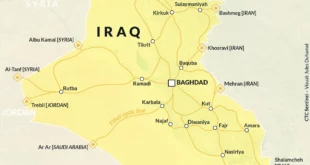With violence levels dropping across the city, Baghdad’s hard-working ambulance drivers now find time to sit and sip tea instead of each rushing to four or five emergency calls a day.“Today the situation has changed for the best. There are ambulances that sometimes do not go out on duty for two days,” said Kais Mohammed, head of an emergency services centre that covers all of southern Baghdad and some areas west.
Baghdadis had become used to the wail of sirens and the sight of red-and-white ambulances speeding through the city’s chaotic streets in response to a relentless daily toll of bombings and shootings.
Sectarian violence has claimed tens of thousands of lives in Iraq since the February 2006 bombing of a revered Shi’ite mosque in predominantly Sunni Arab Samarra, north of Baghdad, unleashed waves of reprisal killings.
Iraqi and U.S. officials have reported sharp falls in Iraqi and U.S. military casualties in the past two months after a “surge” of 30,000 extra U.S. troops was completed in mid-June.
Improving Iraqi security forces and the spread of neighborhood police units, mainly organized by Sunni Arab tribal sheikhs to drive out al Qaeda fighters, have also made significant contributions to a more stable Iraq, officials say.
It has lightened the burden for Baghdad’s ambulance drivers, who found no shortage of work during the capital’s darkest days.
Southern Baghdad’s main emergency ambulance centre controls 16 stations across the south and west of the sprawling city, each of which has three ambulances. Each ambulance has rotating teams of three drivers and three first aid workers.
“One driver could go out on four or five calls in one day,” said Mohammed, sitting in front of a picture of a dead colleague, as he recalled the height of the violence.
DRIVERS KILLED
Ambulance driver Abbas Fadhil remembers one day when he was called out to four separate explosions in his duty area.
“I remember one of those explosions — I carried 12 of the victims, dead and wounded,” he said.
First aid worker Alla Nasir has horrible memories, including one explosion at a fuel station in west Baghdad’s once-affluent Mansour district.
“I transferred 17 bodies in the ambulance, which normally takes just two or three. One of the bodies was burning and stuck to the rubber mat. When we pulled the body out, the mat came out of the ambulance,” he said.
Mohammed said ambulance drivers had been at great risk of physical injury and psychological trauma because of their work. Ambulances were targeted by gunfire and roadside bombs, and five of his drivers had been killed.
“I don’t know why the people were targeting us before,” Nasir said. “We offer services for all.
“When we evacuate someone who is wounded or killed we don’t know whether he is Sunni or Shi’ite … We do not want to know, because our job is for all people.”
Outside Mohammed’s command centre, 15 shiny ambulances stand in a line. Beside them, five others bear bullet holes and broken windows, with some more badly damaged by roadside bombs.
Ambulance drivers no longer feel afraid to go out, Mohammed said, and even move freely at night, when in the past they would have needed police protection.
Improved security had also given the ambulance crews a psychological boost “When they realized they were not being targeted any more, they started to give more than before to their duties,” he said.
 Eurasia Press & News
Eurasia Press & News


